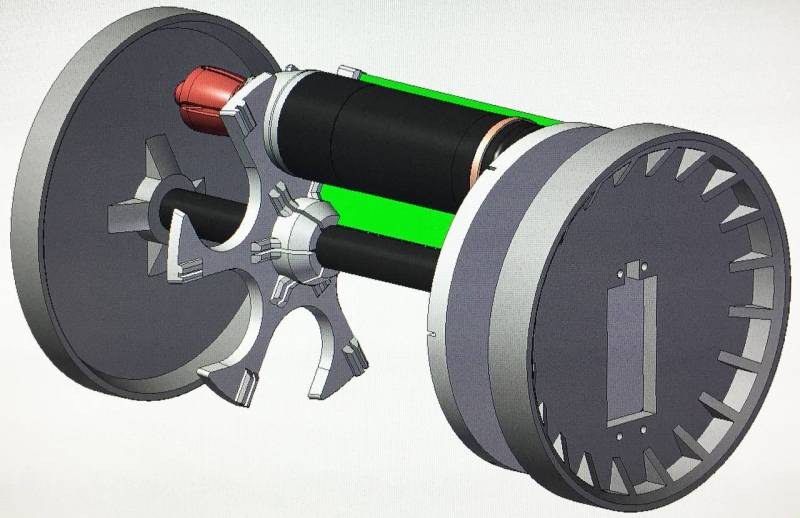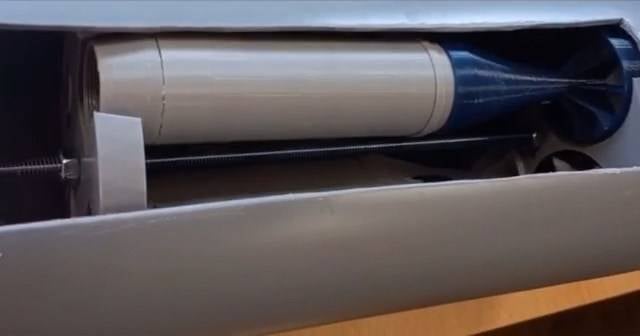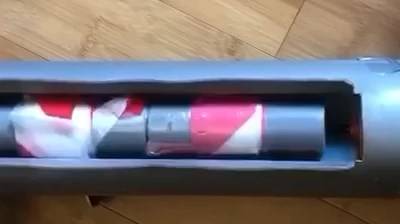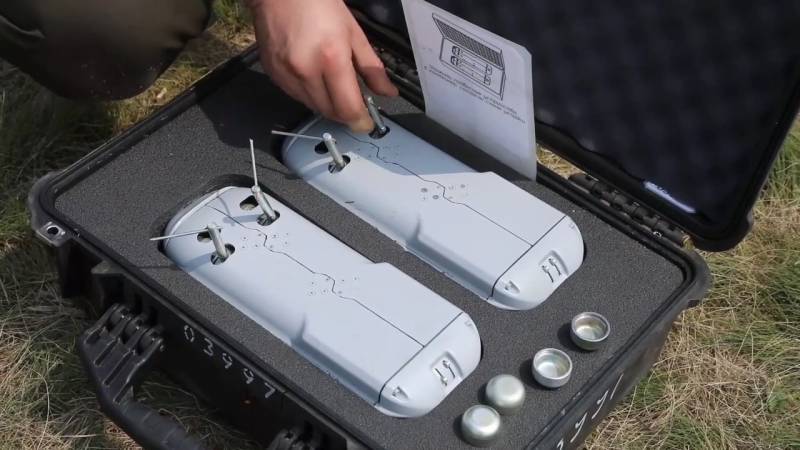Revolver system for dropping ammunition for UAVs from KBP-71

Diagram of new reset devices
Domestic enterprises and initiative groups are developing and producing various systems for dropping ammunition for unmanned aerial vehicles. With the help of such devices, almost any existing UAV can be turned into a bomber with sufficiently high combat characteristics. Different designs of reset means are offered with different capabilities. In particular, the development of a revolver for 4-6 miniature bombs is underway.
revolver type
This year, a group of experts in the field of unmanned aviation, electronics, etc. founded "Design Bureau of Instrument Engineering No. 71". This organization is engaged in conducting case studies and developing UAVs, as well as additional systems for them. In particular, the first ammunition drop systems designed for use on popular air platforms have already been created.
On July 26, KBP-71 announced the development of a revolver-type reset device. To date, this project has been brought to the stage of testing and testing prototypes. The development organization disclosed the main features of the design of such a system and some design characteristics. In addition, they showed the work of mock-ups and outlined further directions for development.
At the moment, we are talking about devices designed for mounting on helicopter-type UAVs with a payload capacity of up to 3 kg. The device is made in the form of a tube, inside which all the main parts and ammunition are placed. According to the general scheme, reset systems for 4 and 6 cells are made.
On August 7, the RT news agency, citing KBP-71, reported that the project of the revolving discharge system had already passed the mock-up stage. The developer company produced several full-fledged products of this type and sent them to an unnamed unit involved in the Special Operation. It is reported that our UAVs for the first time receive revolver-type reset means.

4-cell reset device prototype, viewed through charging and resetting window
In the near future, the new system will be tested in real operation and combat missions. Based on the results of such a check, the design can be finalized and improved. Then it is planned to begin mass production and supply of finished devices to the troops.
The timing of testing, subsequent fine-tuning and the appearance of serial samples in the troops has not yet been specified. However, it can be seen that KBP-71 works quite quickly, and the project goes through all the necessary stages in a short time. This means that the full deployment of new systems in the army can start within the next few months.
Design features
The turret release device for small UAVs is not particularly complex, which simplifies the development process, production and subsequent operation. A minimum of parts is used, which increases reliability in all conditions. In addition, the proposed design is cross-platform compatible, scalable, and has other advantages.
The ammunition release system is made in a tubular body of sufficient diameter and length. The dimensions and weight of this product depend on the parameters of compatible "air bombs". A window is provided on the bottom of the case for loading and dumping ammunition. Outside there are fasteners for installation on the carrier.
A rotor is placed inside the pipe-body, which is responsible for moving and relieving the load. The published materials show two variants of this part. In the first case, a pair of clips with round cutouts is placed on a common axis. The second option is a kind of impeller made of solid plates - they are responsible for holding and moving ammunition. In both cases, the rotor is connected to a remote-controlled electric motor.

Another prototype from KBP-71
The loading of such a device is carried out by successively placing ammunition in the rotor and turning the latter at a given angle. In this case, the "bomb" is fixed by the elements of the rotor and/or housing. By turning the rotor, the device discharges ammunition.
There are now two variants of the discharge system for different ammunition under testing. The first modification carries four products with a caliber of 40 mm. The second option is designed for 30 mm ammunition and has six cells. As "air bombs" it is proposed to use grenades of the VOG series or other available samples, modified for dropping from air platforms. The possibility of using the device for distributing printed campaign materials is also mentioned.
Technical potential
In general, the new project of the discharge system from KBP-71 is of interest and can positively influence the development of domestic unmanned aircraft. The proposed devices have obvious advantages, but first you need to complete the testing and fine-tuning of the design.
One of the main advantages of revolving systems from KBP-71 is the very fact of their presence. As far as is known, domestic copters are not yet equipped with such means, and the available and used reset devices to a certain extent limit the size of the ammunition load. The emergence and mass distribution of revolving systems will give choice and increase the flexibility of using UAVs.
The proposed design is simple and efficient. There are no complex parts and components in it, and all the work comes down to turning the rotor at the command of the operator. At the same time, some projects of this kind encountered difficulties of a mechanical and other nature. If KBP-71 was able to cope with such problems, then its development compares favorably with others.

Ammunition release devices for UAV "Orlan-10"
At the moment, KBP-71 is working on only two caliber drop devices for UAVs with a payload of up to 3 kg. In the future, they can use the potential of the design and create systems for larger ammunition and related carriers. For obvious reasons, the development of such products will not be easy and will require a separate refinement of the design.
The proposed reset system can operate in two modes without any modifications. With its help, you can perform single discharges of ammunition on targets or use the entire ammunition load in a "burst". In addition, with the appropriate refinement of the design and controls, you can get another mode. The revolving design allows you to make a selective choice of ammunition of the desired type.
Design and development
Thus, the Russian industry, represented by large enterprises and small organizations, continues to develop various means and systems in the field of unmanned aircraft. The appearance of certain UAV projects, as well as auxiliary means for them, is regularly reported. In addition, new samples with enviable regularity fall into the combat zone and undergo a full test.
Quite a long time ago, various devices for dropping ammunition installed on UAVs began to be delivered to the front. They show themselves well, which stimulates the development and production of new products of this kind. Now, for the first time in domestic practice, a revolving discharge system for drones. So far, we are only talking about tests in a real operation, but in the near future, mass production and full-fledged deliveries may start.
The outcome of the KBP-71 project is still unclear. However, it is already clear that with the help of the proposed devices it will be possible to improve the combat qualities of both individual UAVs and unmanned aircraft in general. And besides, with a lot of developments in the field of UAVs and additional funds, the army gets the opportunity to gain significant experience and make a choice in the context of further development.
Information